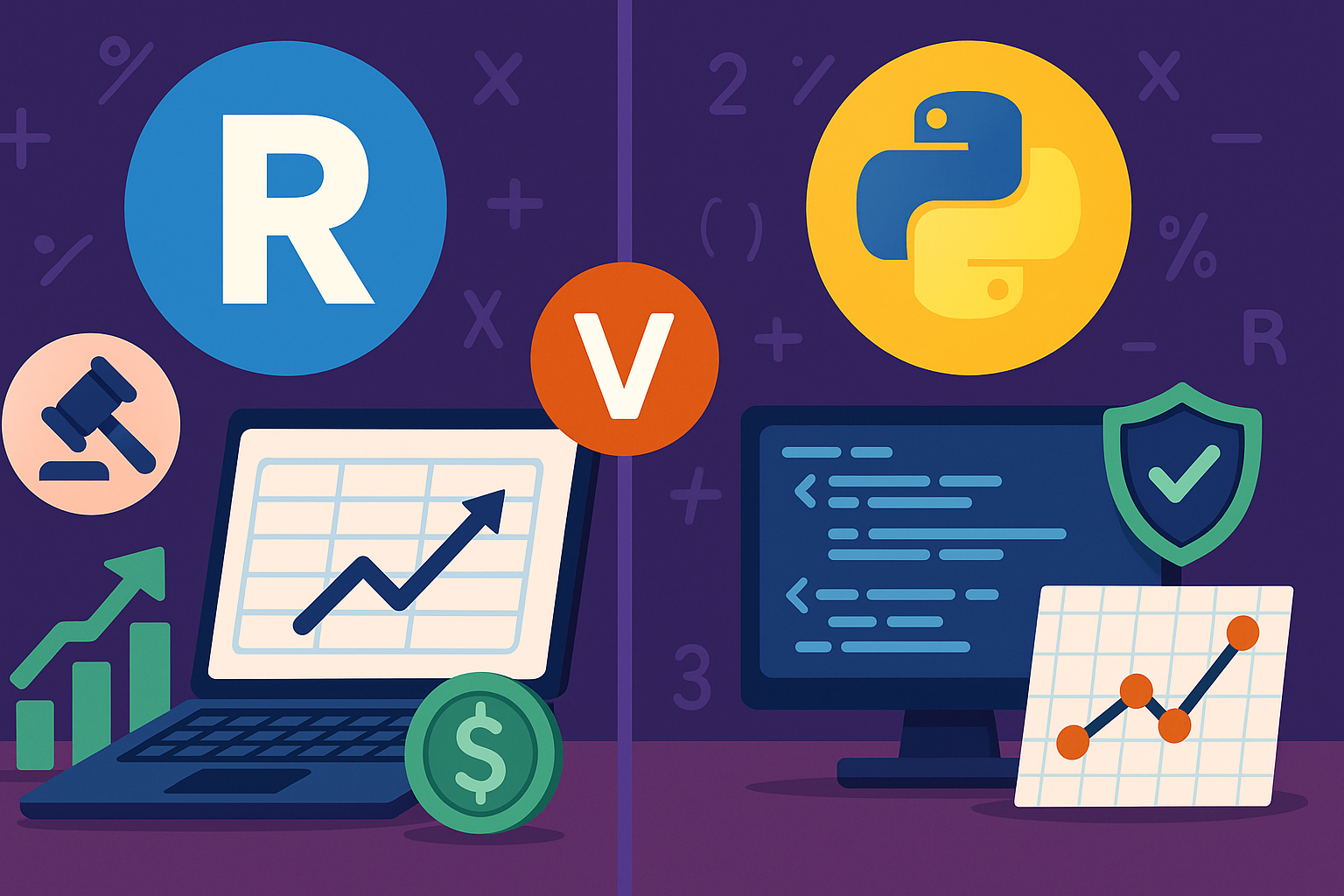Financial data analysis is a pillar of modern quantitative finance, and choosing the right tool can set the course for your success. At Peaks2Tails, we’ve built our ecosystem—from data cleaning to model‑building and interpretation—around hands‑on learning using Python and Excel. But what about R? Let’s dig into the strengths of each and see which fits your financial toolkit best.
🐍 Python: A Quant Powerhouse
Peaks2Tails already emphasizes Python in its flagship Deep Quant Finance and Python for Risk courses . Python is renowned for its:
- Versatile ecosystem: With NumPy, Pandas, SciPy, Statsmodels, Matplotlib, Seaborn—and interactive Jupyter notebooks—you can seamlessly cover data wrangling, visualization, statistical modeling, and even PDEs and Monte Carlo simulations all in one language.
- Scalability and integration: Whether you’re building spreadsheets or deploying models in production, Python adapts—from prototype to production-ready.
- Adoption in finance: Major banks, hedge funds, and quant teams widely use Python-based stacks for risk analytics and derivatives pricing amazon.com.
- Ecosystem synergy: Python smoothly integrates with Excel, leverageable inside Peaks2Tails’ blended labs that offer both spreadsheet intuition and Python automation.
📊 R: Specialized, Statistical, Streamlined
R, with its heritage in statistics, still holds sway in specific financial domains:
- Statistical finesse: R excels in econometrics, hypothesis testing, and interactive statistical modeling—supporting advanced analytics with packages like
xts,zoo,quantmod, andforecast. - Rapid prototyping: For hands-on time-series work or exploratory data analysis, its concise syntax is a boon.
- Rich visualization:
ggplot2enables highly polished, customizable visualizations—especially useful for risk reporting and statistical diagnostics. - Niche academic and regulatory use: R remains entrenched in academic circles and specialized regulatory analysis tasks.
That said, R’s downsides include a fragmented ecosystem, limited GUI support compared to Python IDEs, and less versatility for deployment beyond analytics.
🧭 Choosing Based on Your Needs
| Factor | Python | R |
|---|---|---|
| Data manipulation & visualization | Excellent – Pandas, Seaborn, Matplotlib | Excellent – dplyr, ggplot2, but more fragmented |
| Time-series & econometrics | Strong – Statsmodels, SciPy | Very strong – native packages |
| Statistical modeling | Good – scikit-learn, Statsmodels | Excellent – built for stats |
| Production scalability & deployment | Excellent – adaptable to web apps, APIs | Limited – fewer deployment/flexible options |
| Learning curve | Moderate – but well-supported | Gentle – stats-focused users often pick it easily |
| Industry adoption (Finance) | Leading – widespread in banks, fintech | Niche – pockets in academic/regulatory use |
🎯 What Peaks2Tails Recommends
At Peaks2Tails, our comprehensive curriculum is built around Python, with Excel supplementing theoretical understanding. For those aiming for careers in market risk, credit risk, or quantitative trading, mastering Python offers the greatest strategic value.
But if your interests lie in econometrics, academic research, or statistical analytics in finance, pairing Python with R could yield powerful flexibility. Use R for rapid statistical modeling, and Python to scale and deploy your models.
✅ Final Takeaways
- Learning Python is essential for modern financial data analysis, especially if you’re pursuing Deep Quant Finance, risk modeling, or trading—core strengths of Peaks2Tails’ offerings.
- Learning R, while not critical for Peaks2Tails’ current courses, can complement your skillset if your focus is deep statistical analysis or regulatory reporting.
- Best overall strategy: Build a solid Python foundation, and consider adding R if your work requires nuanced statistical techniques.
By mastering Python through Peaks2Tails and supplementing with R when needed, you’ll position yourself as a powerful, versatile financial analyst—ready to tackle everything from time-series forecasting to advanced risk modeling.
Ready to build your skillset with Python? Explore our Python‑based courses like Deep Quant Finance and Python for Risk at peaks2tails.com, where we guide you end‑to‑end—from theory and Excel to hands‑on Python implementation and certification.

